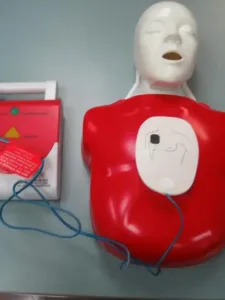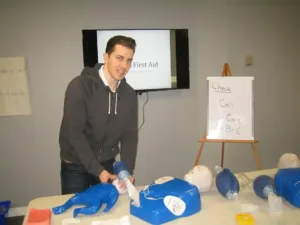About Pediatric Advanced Life Support

PALS – or Pediatric Advanced Life Support – is very similar to ACLS but with a focus on pediatric victims. PALS is performed on pediatric victims who experience cardiac arrest within a health care setting or facility. Pediatric patients include neonates, infants, toddlers, school-age children, and young teenagers. PALS is specifically targeted towards healthcare providers who respond to emergencies regarding pediatric patients.
Who can take the PALS program?
The program is tailored for both health care providers for pediatric patients and health care students who need PALS credentials (either first time or a renewal). Like the ACLS program, students are required to have a completion card or certificate for BLS for health care providers (C) before applying for the PALS program.
What does the PALS program teach?
Course curriculum
The PALS program basically teaches the same curriculum as ACLS but adjusting for the differences in body structure and function of children.
-
Bag valve mask on a pediatric training mannequin. The guiding principle for PALS is the 2010 Basic Life Support (BLS) guidelines from the American Heart Association. The 2010 BLS gives updates on cardiopulmonary resuscitation techniques and the chain-of-survival used in rescuing victims of cardiac arrest.
- Pediatric assessment is a fundamental lesson that is taught throughout the program, learning how to properly assess the different systems of a pediatric patient. A lot of changes are made when assessing a smaller and younger body; assessment has to start from the least invasive to the most invasive, and preferably with the parents near or holding the child.
- The main different taught in PALS is how to perform chest compressions, give rescue breaths, and use the AED on pediatric patients. Chest compressions for infants are different from chest compressions for bigger children, moving from compressing with two fingers to one hand as the child gets older and/or bigger.
- Pharmacology for pediatric patients are also an important course topic included in training, especially how to perform introsseous and fluid bolus administration to children.
- Team-based approach on responding to “codes”.
The following training materials are given to trainees:
- PALS Emergency Crash Cart Cards
- PALS Pocket Reference Cards
- PALS training manual
What else do I need to know about training?
The entire PALS program lasts approximately 14 hours, including all skill tests and written exams. To pass the program, students need to pass both the final skills test and written exam. Once a program is completed, a completion card or certificate is awarded to the student. The score on the written exam has to be 84% or better. The skills tests the student needs to pass are 1 and 2 Rescuer Child BLS with AED, 1 and 2 Rescuer Infant BLS, and 2 PALS core case scenarios (1 cardiac and 1 respiratory/shock case) as a team leader.
The card is only valid for two years. Students who want to renew their cards need to retake the PALS program update course, which is 8 hours and 20 minutes with all optional stations and 6 hours and 20 minutes without.

